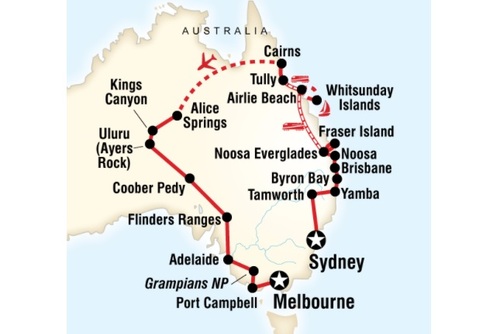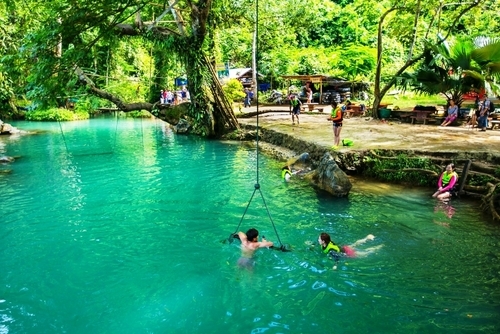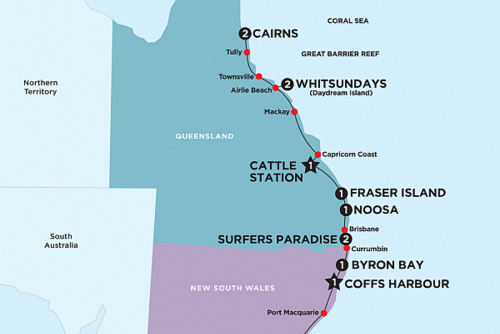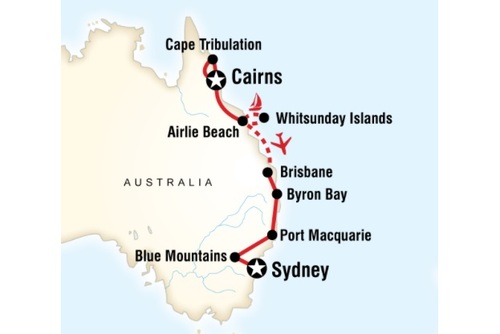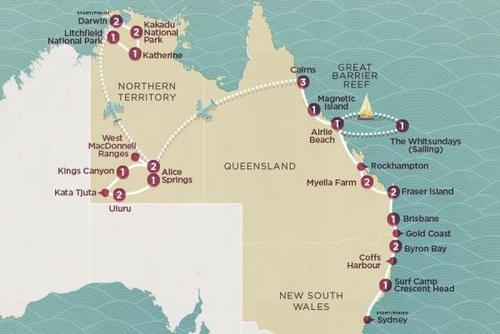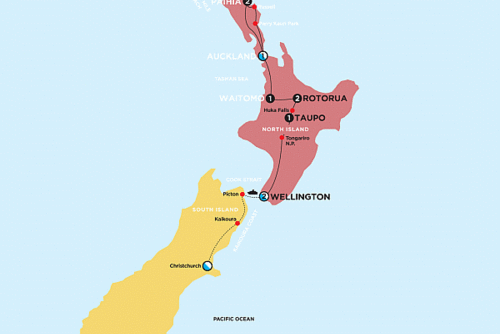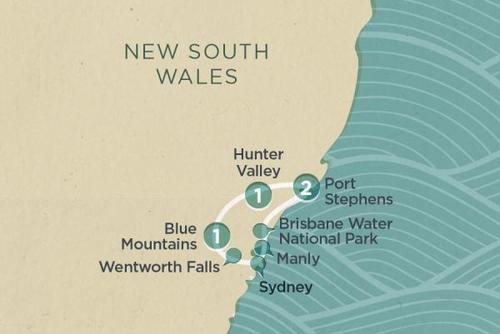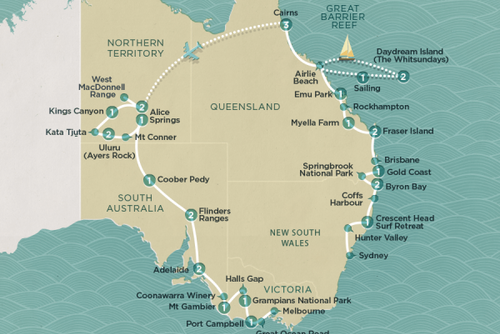Think about it: the journey isn’t too long, so people are less likely to get annoyed, and there’s less likelihood of you getting lost (and even if you do, the destination still won’t be too far, so you can just turn around).
If you’re landing in Sydney and want to see more than the main tourist attractions like the Opera House plan an excursion and go see some spectacular locations that aren’t too far away.
Here are some of the best places to visit near Sydney, including some of the highlights of New South Wales and nearby.
1. Explore the Blue Mountains National Park - 1.5hr drive
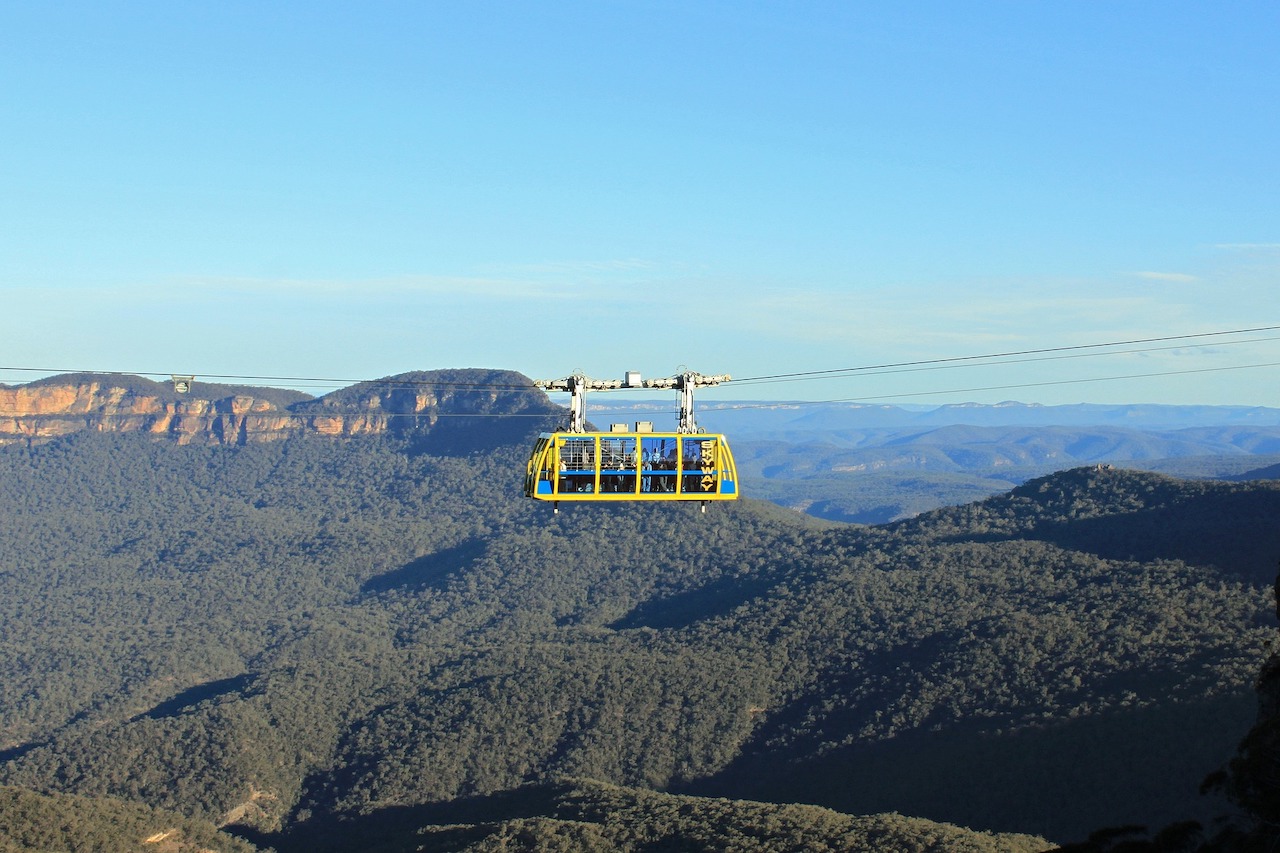
The Blue Mountains National Park is renowned for its vast and scenic landscape that offers multiple breathtaking views.
Here, you can admire some of the best examples of Aboriginal rock art at Red Hand Cave, immerse yourself in the colourful not-so-secret gardens of The Campbell Rhododendron Garden and explore the “lost world” in the mountain of the Newnes plateau.
Being well-known, it does draw crowds, but when you know where to go, it’s easy to escape them. However, it’s best to set off on your journey as early as you can because of all the commuters on the road in the afternoon.
2. Port Stephens - 2hr drive
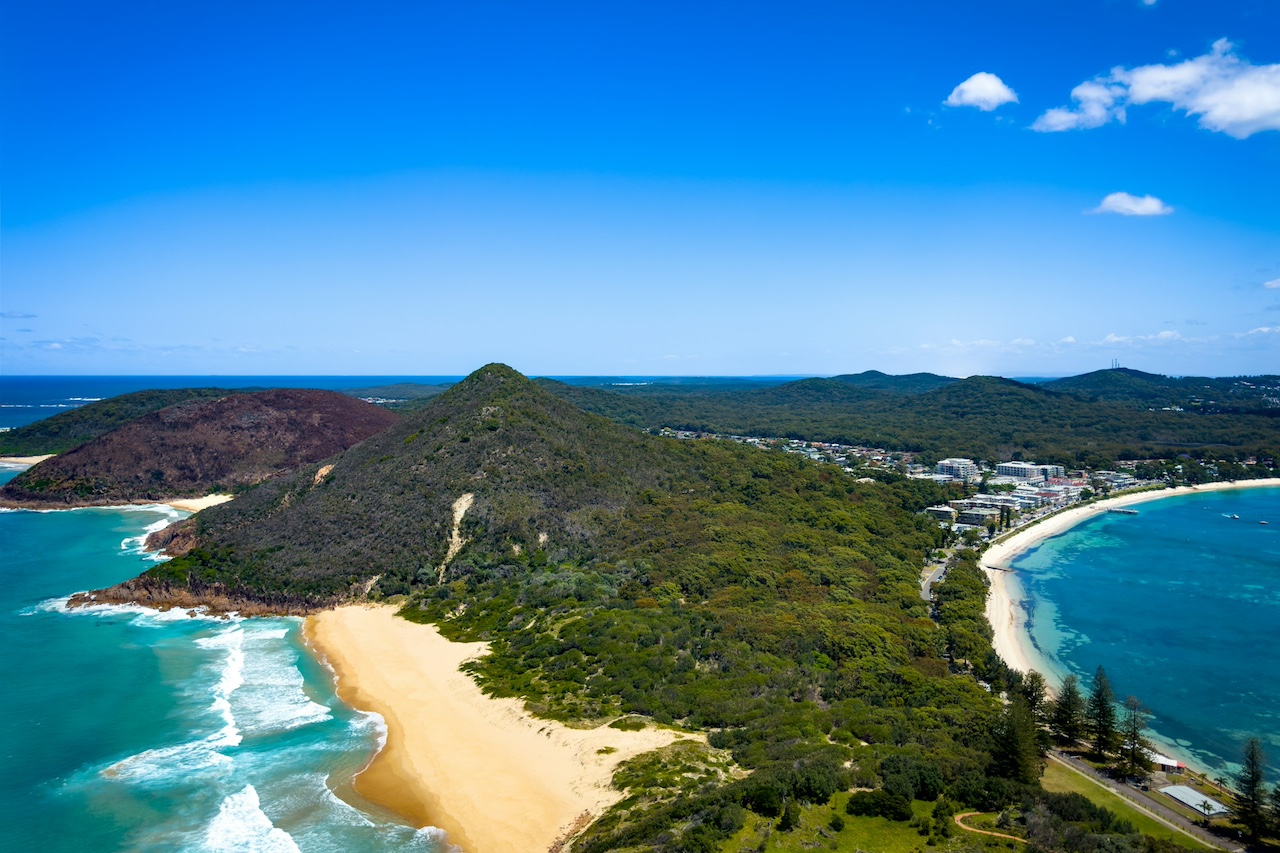
Port Stephens is located around 2 hours up the coast from Sydney and this is one of the most popular destinations on the east coast. The drive here is also stunning.
There are lots of fun things to do in the Port Stephens region, from exploring sand dunes and national parks to booking a boat tour. For views and nature trails head to the spectacular Tomaree National Park in Shoal Bay (pictured above).
3. Experience the charm of Hunter Valley - 3.5hr drive
For all the wine enthusiasts out there, Hunter Valley is a destination that is not to be missed. You’ll come for the vineyards but experience so much more than what you bargained for because there is so much to do and see.
By ditching the motorways at Calga Interchange, you’ll come across so many endearing downs along the road back to Cessnock.
You’ll find a range of woollen products, antiques and artisanal crafts when you stop over at the Hand Made in the Hunter Markets and Hunter Valley Shopping Village.
4. Head over to Newcastle - 2hr drive
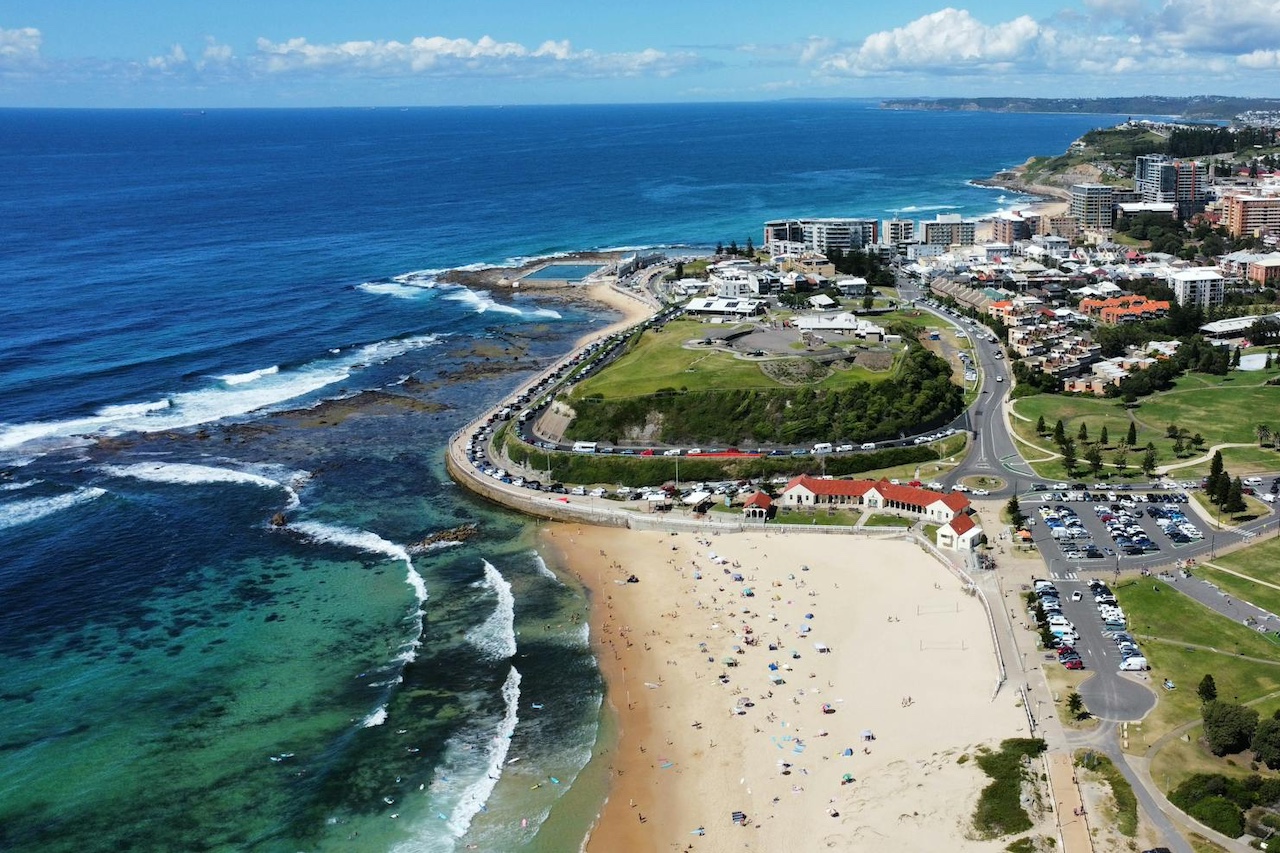
Calling everyone who loves a good balance of the laidback coastal life and the hustle and bustle of endearing cafes with good food – you need to head over to Newcastle!
Here, you’ll find a realm of good cafes, events and even a booming nightlife. It also offers iconic ocean baths and miles of stunning beaches for those who just want to get their dose of “vitamin sea”.
The best way to get to Newcastle, and the most scenic route, is to go along the old road, which is literally called The Scenic Road, where you’ll get breathtaking glimpses of everything from mountains to the oceans and so much more.
5. Seek out hidden spots in the Royal National Park - under 1hr drive
For a majestic day trip, there’s nothing quite like heading out to the Royal National Park (especially if you’re there in the spring) – and it takes less than an hour to get there! Heading 40km down the M1, you’ll come across mesmerising waterfalls, like Anice Falls and National Falls, and then you can take a walk along Marley Beach or Little Marley Trail. The Royal National Park is a brilliant place to just relax and even have a picnic.
6. Experience the rainforests of Kangaroo Valley - 1.5hr drive
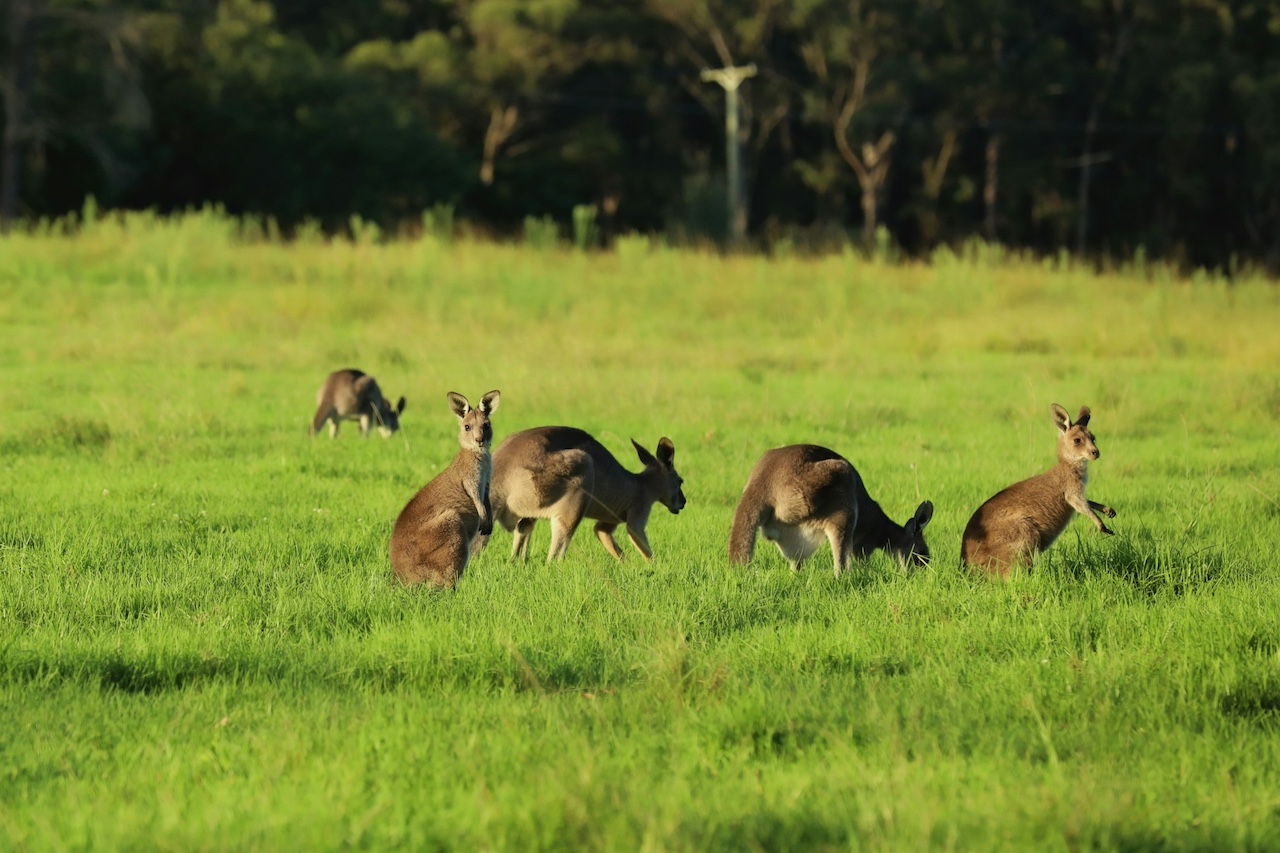
There’s just something about the rainforests of Kangaroo Valley that just makes your troubles seem to melt away. But it’s more than just the destination because the beautiful drive via Wollongong and the memorable pit stops make it all the more enchanting.
One of the opportunities you cannot miss along the way is stopping over at the idyllic town of Berry whether it's for a late brunch, stunning hotcakes or good coffee, this town is foodie heaven. You won’t regret making a reservation at South on Albany for dinner if you intend to stay over.
Another stop you need to make on your way back to Sydney is Bowral, where you’ll find a range of charming gardens, boutiques and cafes.
7. Go cave hunting at Jenolan and Wombeyan - 2.5hr drive
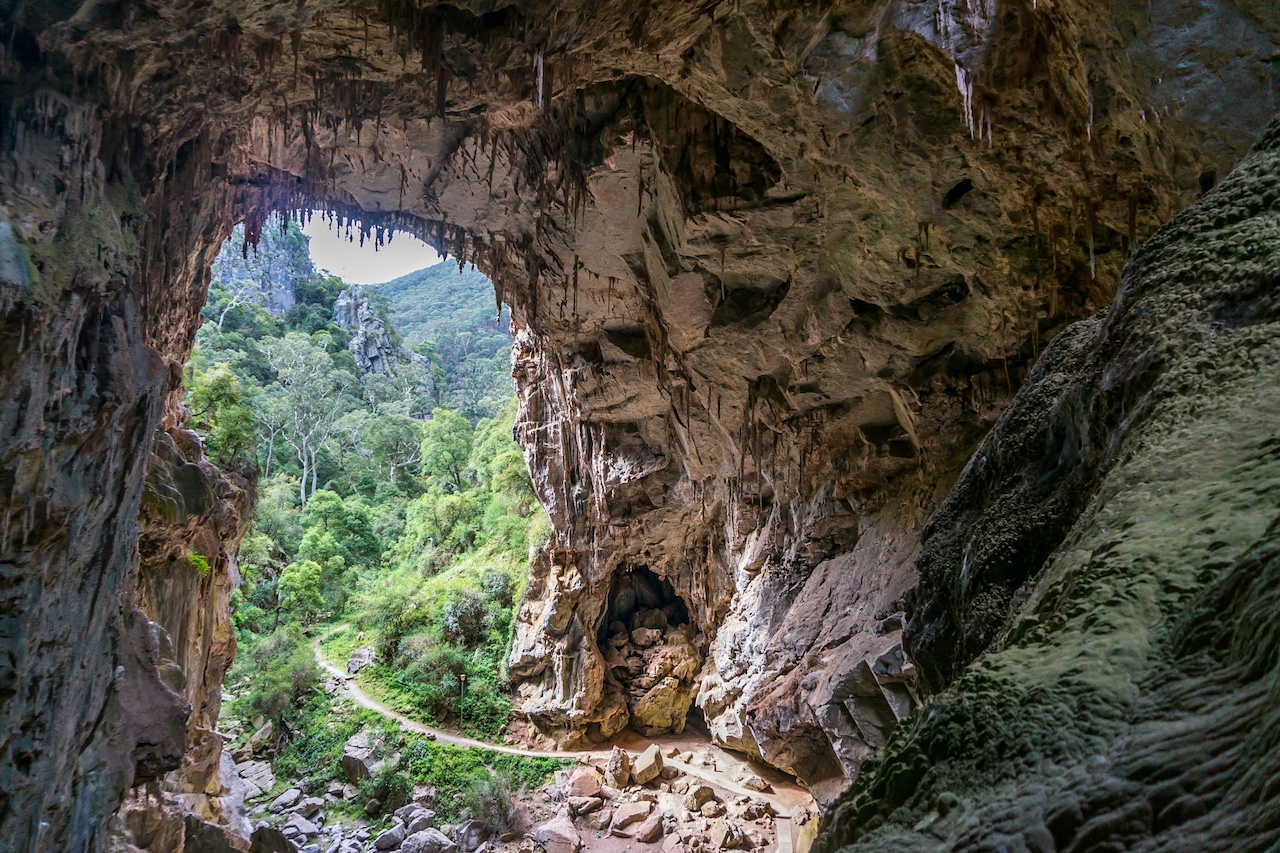
Adventure seekers and explorers who are dying to find some caves should prepare to have their minds blown when they take a day trip around New South Wales, where they will find an abundance of magnificent caves. Jenolan offers a natural spectacle, and to experience some beautiful limestone caves, you need to head to Wombeyan.
8. Be dazzled by the crystal clear waters of Jervis Bay - 2.5hr drive
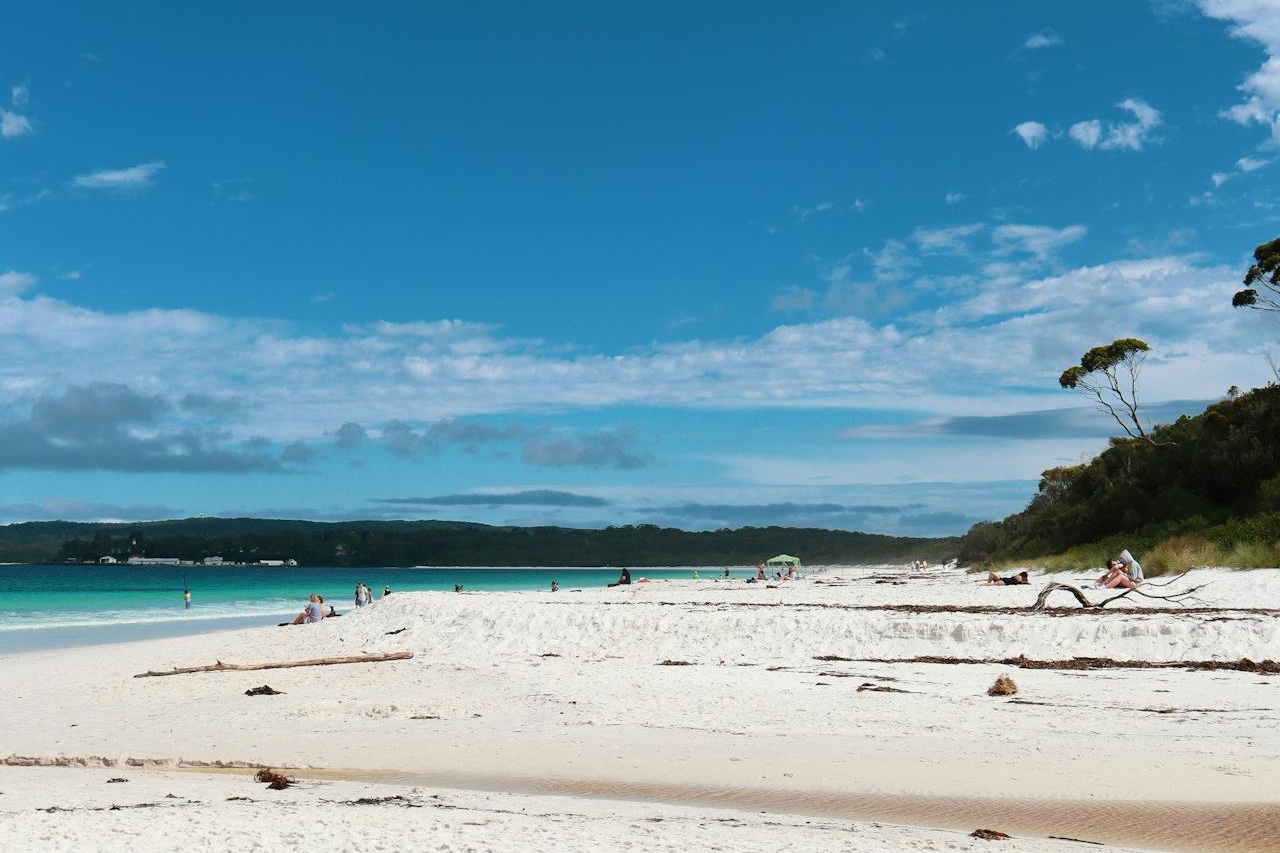
For a glimpse of mesmerising, crystal clear waters close to Sydney, you need to take a drive to Jervis Bay.
Whether it’s for the day or you have a weekend to spend, if you want to explore the bay, relax on the sand, go on a dolphin-watching cruise, or all of the above, then a getaway to Jervis Bay is exactly what you need.
Here, you’ll find the iconic Sea Cliff Bridge and the magnificent Chinamans Beach (which is the more serene version of Hyams Beach).
Tips to have an awesome day trip from Sydney
In order to have a fun day trip that is memorable for all the right reasons, you need to ensure you’re well-prepared. So, here are some of the best tips we can give you to have an awesome day trip when travelling from Sydney:
- Ensure you’ve considered the distance that you’ll be travelling so that you can anticipate how long the trip will take
- Plan out most of the activities you want to do at your destination and mark off the pit stops you want to make along the way
- Ensure you’ve budgeted correctly for fuel, food and other expenses
- Ensure you have the right vehicle for the drive. You can find special offers on camper rentals in Sydney right here
- Book accommodation and activities ahead of time to avoid disappointment
- Pack appropriately for the weather
Final Thoughts
Australia’s diversity means there is so much to do, but when you’re on a time crunch in Sydney and want to experience life on the road in smaller batches, then you can’t miss out on making these day trips. If you have a longer trip to Australia planned you might want to check out our tips for the ultimate Sydney to Cairns itinerary.



